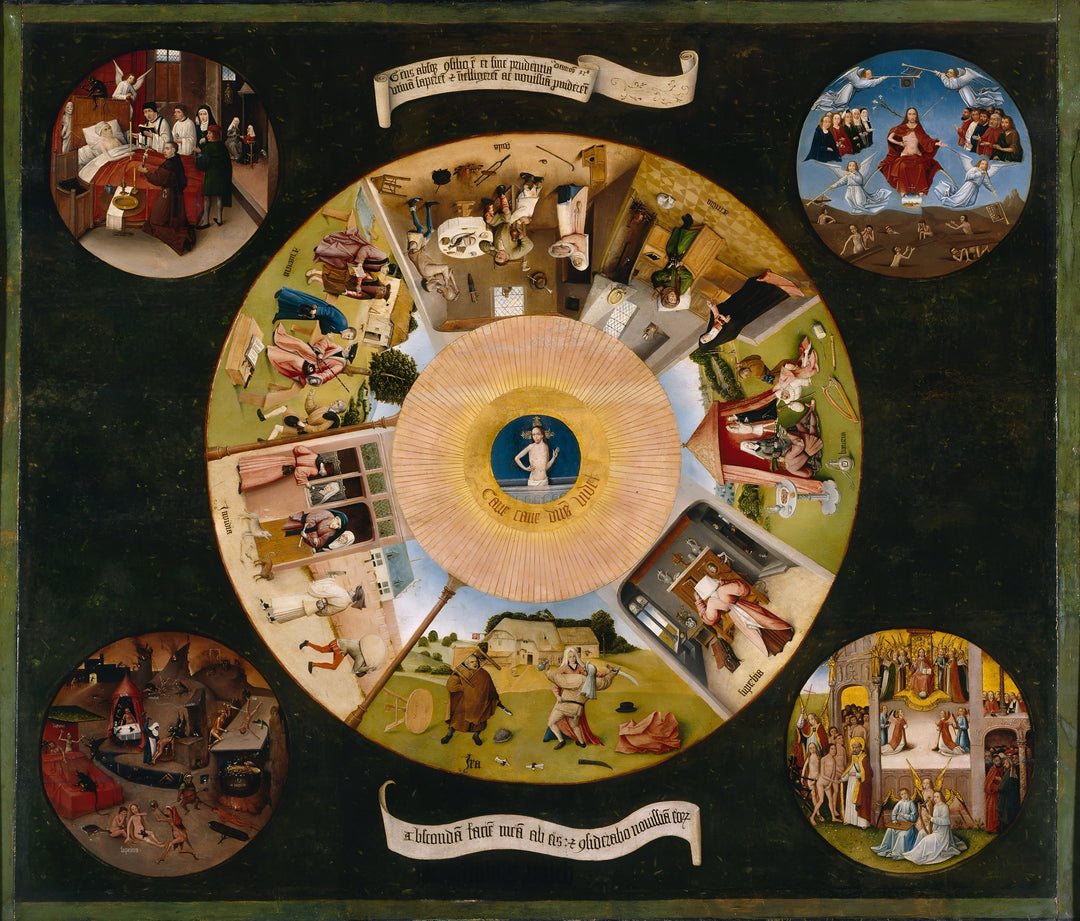
Table of the Seven Deadly Sins - Hieronymus Bosch
| Author: | Hieronymus Bosch |
|---|---|
| Title: | Table of the Seven Deadly Sins |
| Original location: | Museo del Prado, Madrid, Spain |
| Year: | 1505-1510 |
The painting Table of the Seven Deadly Sins by Hieronymus Bosch, created between 1505 and 1510, is a visual allegory that combines Christian, philosophical, and psychological themes to explore the human condition and its spiritual consequences. At the center of the composition, an all-seeing eye surrounds the main scene, representing the constant presence of Christ, while in the corners of the painting appear the four last things: death, final judgment, heaven, and hell. These elements reflect a vision of the soul’s ultimate destiny, rooted in medieval theology.
The circular depiction of the deadly sins reinforces the idea of the perpetual cycle of human vice and the need for liberation. In its historical context, this work belongs to the late Gothic movement, which preceded the Renaissance, and combines the symbolic rigidity of its time with a visual innovation that influenced later generations, including the Mannerists. Additionally, the painting attempts to respond to the religious and social debates that foreshadowed the Protestant Reformation.
The central eye emitting water and blood is a reminder of the crucifixion of Jesus, suggesting that the solution to the problem of sin lies in Christ. The inclusion of the last things in each corner of the painting emphasizes man’s final destiny, while the decomposition of the body and the torments of hell contrast with the glory of heaven, reinforcing the duality of earthly existence and eternity. The narrative dynamism and symbolic complexity of this work cemented its influence on the European art tradition, making it a bridge between the medieval world and new Renaissance perspectives.